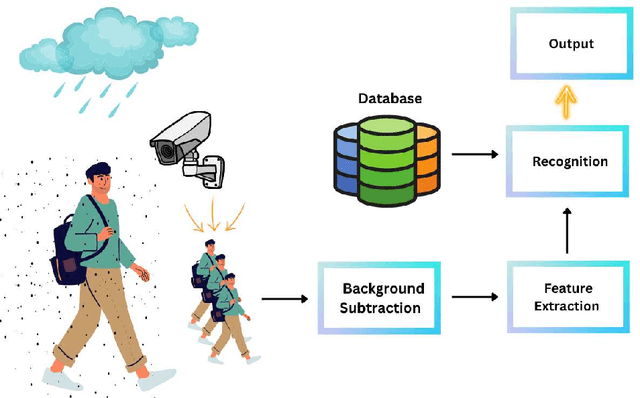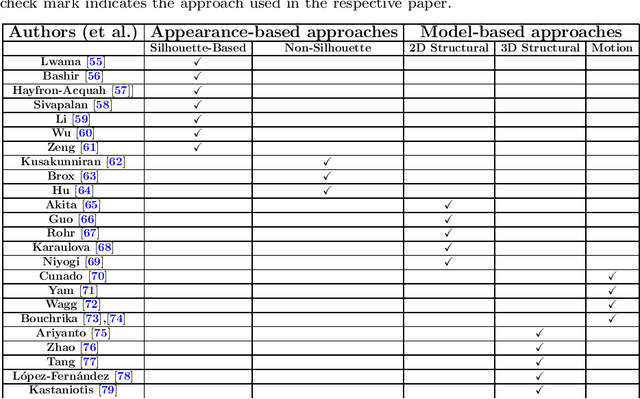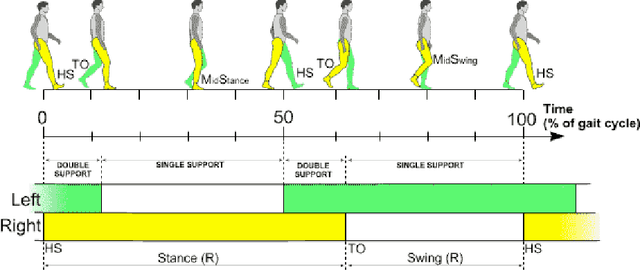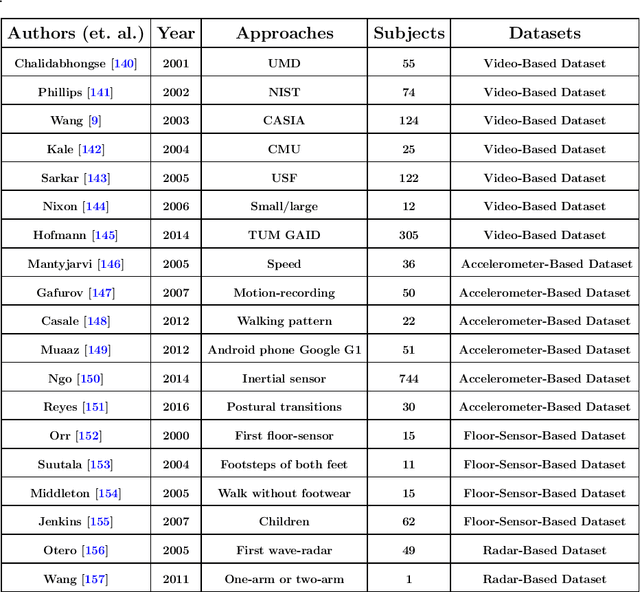Md Palash Uddin
Human Gait Recognition using Deep Learning: A Comprehensive Review
Sep 18, 2023



Abstract:Gait recognition (GR) is a growing biometric modality used for person identification from a distance through visual cameras. GR provides a secure and reliable alternative to fingerprint and face recognition, as it is harder to distinguish between false and authentic signals. Furthermore, its resistance to spoofing makes GR suitable for all types of environments. With the rise of deep learning, steadily improving strides have been made in GR technology with promising results in various contexts. As video surveillance becomes more prevalent, new obstacles arise, such as ensuring uniform performance evaluation across different protocols, reliable recognition despite shifting lighting conditions, fluctuations in gait patterns, and protecting privacy.This survey aims to give an overview of GR and analyze the environmental elements and complications that could affect it in comparison to other biometric recognition systems. The primary goal is to examine the existing deep learning (DL) techniques employed for human GR that may generate new research opportunities.
A Network Theory Investigation into the Altered Resting State Functional Connectivity in Attention-Deficit Hyperactivity Disorder
Nov 23, 2022Abstract:In the last two decades, functional magnetic resonance imaging (fMRI) has emerged as one of the most effective technologies in clinical research of the human brain. fMRI allows researchers to study healthy and pathological brains while they perform various neuropsychological functions. Beyond task-related activations, the human brain has some intrinsic activity at a task-negative (resting) state that surprisingly consumes a lot of energy to support communication among neurons. Recent neuroimaging research has also seen an increase in modeling and analyzing brain activity in terms of a graph or network. Since graph models facilitate a systems-theoretic explanation of the brain, they have become increasingly relevant with advances in network science and the popularization of complex systems theory. The purpose of this study is to look into the abnormalities in resting brain functions in adults with Attention Deficit Hyperactivity Disorder (ADHD). The primary goal is to investigate resting-state functional connectivity (FC), which can be construed as a significant temporal coincidence in blood-oxygen-level dependent (BOLD) signals between functionally related brain regions in the absence of any stimulus or task. When compared to healthy controls, ADHD patients have lower average connectivity in the Supramarginal Gyrus and Superior Parietal Lobule, but higher connectivity in the Lateral Occipital Cortex and Inferior Temporal Gyrus. We also hypothesize that the network organization of default mode and dorsal attention regions is abnormal in ADHD patients.
 Add to Chrome
Add to Chrome Add to Firefox
Add to Firefox Add to Edge
Add to Edge